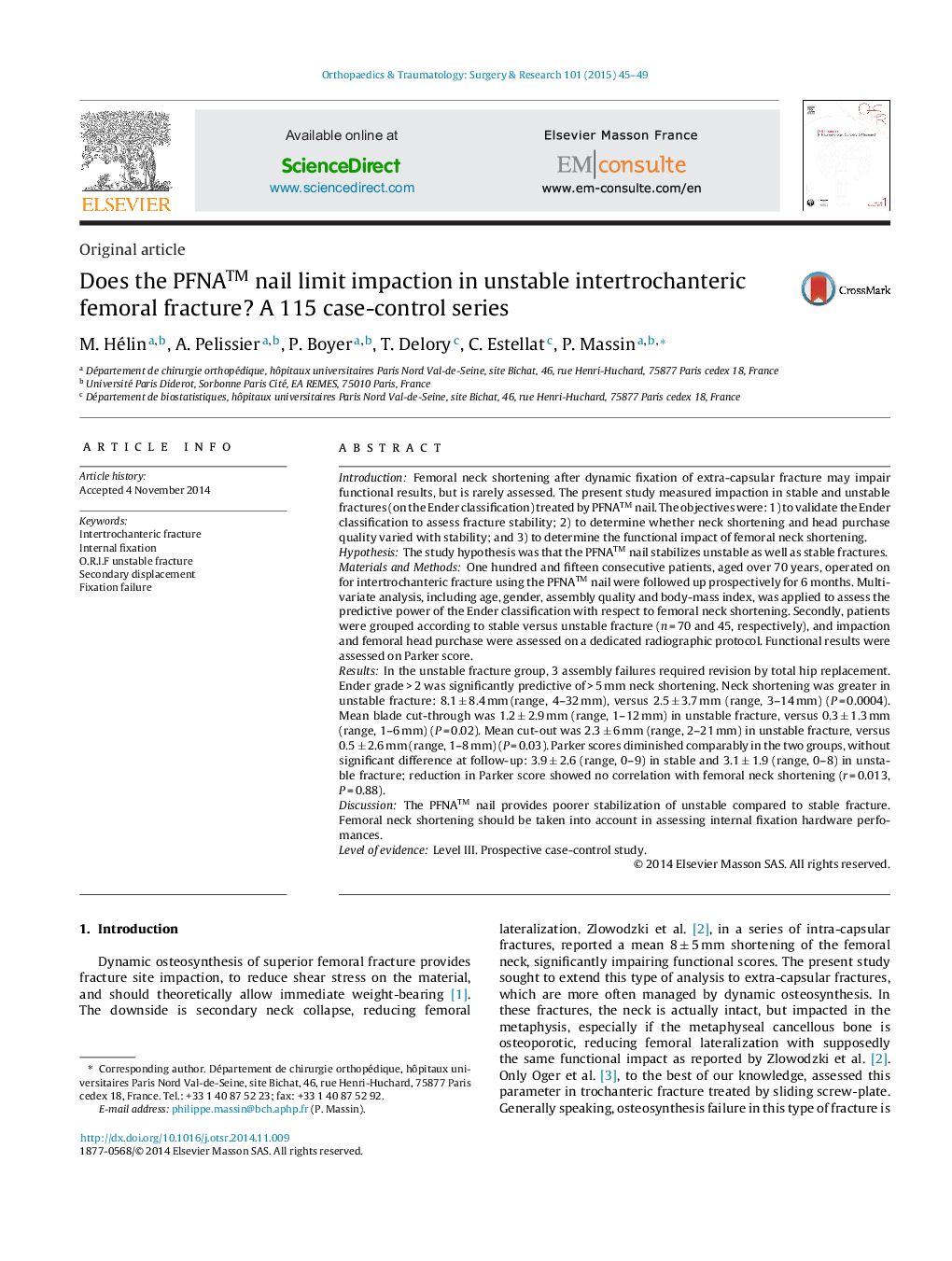| Article ID | Journal | Published Year | Pages | File Type |
|---|---|---|---|---|
| 4081232 | Orthopaedics & Traumatology: Surgery & Research | 2015 | 5 Pages |
IntroductionFemoral neck shortening after dynamic fixation of extra-capsular fracture may impair functional results, but is rarely assessed. The present study measured impaction in stable and unstable fractures (on the Ender classification) treated by PFNA™ nail. The objectives were: 1) to validate the Ender classification to assess fracture stability; 2) to determine whether neck shortening and head purchase quality varied with stability; and 3) to determine the functional impact of femoral neck shortening.HypothesisThe study hypothesis was that the PFNA™ nail stabilizes unstable as well as stable fractures.Materials and MethodsOne hundred and fifteen consecutive patients, aged over 70 years, operated on for intertrochanteric fracture using the PFNA™ nail were followed up prospectively for 6 months. Multivariate analysis, including age, gender, assembly quality and body-mass index, was applied to assess the predictive power of the Ender classification with respect to femoral neck shortening. Secondly, patients were grouped according to stable versus unstable fracture (n = 70 and 45, respectively), and impaction and femoral head purchase were assessed on a dedicated radiographic protocol. Functional results were assessed on Parker score.ResultsIn the unstable fracture group, 3 assembly failures required revision by total hip replacement. Ender grade > 2 was significantly predictive of > 5 mm neck shortening. Neck shortening was greater in unstable fracture: 8.1 ± 8.4 mm (range, 4–32 mm), versus 2.5 ± 3.7 mm (range, 3–14 mm) (P = 0.0004). Mean blade cut-through was 1.2 ± 2.9 mm (range, 1–12 mm) in unstable fracture, versus 0.3 ± 1.3 mm (range, 1–6 mm) (P = 0.02). Mean cut-out was 2.3 ± 6 mm (range, 2–21 mm) in unstable fracture, versus 0.5 ± 2.6 mm (range, 1–8 mm) (P = 0.03). Parker scores diminished comparably in the two groups, without significant difference at follow-up: 3.9 ± 2.6 (range, 0–9) in stable and 3.1 ± 1.9 (range, 0–8) in unstable fracture; reduction in Parker score showed no correlation with femoral neck shortening (r = 0.013, P = 0.88).DiscussionThe PFNA™ nail provides poorer stabilization of unstable compared to stable fracture. Femoral neck shortening should be taken into account in assessing internal fixation hardware perfomances.Level of evidenceLevel III. Prospective case-control study.
